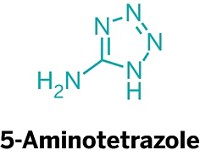Advertisement
Grab your lab coat. Let's get started
Welcome!
Welcome!
Create an account below to get 6 C&EN articles per month, receive newsletters and more - all free.
It seems this is your first time logging in online. Please enter the following information to continue.
As an ACS member you automatically get access to this site. All we need is few more details to create your reading experience.
Not you? Sign in with a different account.
Not you? Sign in with a different account.
ERROR 1
ERROR 1
ERROR 2
ERROR 2
ERROR 2
ERROR 2
ERROR 2
Password and Confirm password must match.
If you have an ACS member number, please enter it here so we can link this account to your membership. (optional)
ERROR 2
ACS values your privacy. By submitting your information, you are gaining access to C&EN and subscribing to our weekly newsletter. We use the information you provide to make your reading experience better, and we will never sell your data to third party members.
Materials
Unstable allotropes stored safely in carbon
Activated carbon enables white phosphorus and yellow arsenic to be stored and shipped with minimal decomposition
by Bethany Halford
February 5, 2018
| A version of this story appeared in
Volume 96, Issue 6

Although the elemental allotropes white phosphorus (P4) and yellow arsenic (As4) have the potential to be useful reagents, these compounds aren’t commonly used by chemists because of their notorious instability. White phosphorus will burst into flame when exposed to air and is subject to strict shipping regulations. Light-sensitive yellow arsenic turns to gray arsenic so quickly that solutions of the element must be used in complete darkness. Chemists have been working to create materials in which these allotropes can be stored stably, but their success has been limited. Now, University of Regensburg’s Manfred Scheer and colleagues have found that the pores within activated carbon work well at storing both white phosphorus and yellow arsenic. What’s more, the elements can be released from the activated carbon into solution, where they can subsequently be used as reagents (Nat. Commun. 2018, DOI: 10.1038/s41467-017-02735-2). Scheer’s group prepares the material by adsorbing a solution of P4 or As4 in tetrahydrofuran onto activated carbon with a defined pore size and distribution. After centrifugation, decanting, and drying, the resulting black powder can be stored on a benchtop and exposed to light and air with only minimal decomposition (Scheer’s group recommends, instead, storing the arsenic-filled carbon carefully in a closed container because of its unknown toxicity). The researchers note that this opens new avenues for reactions with white phosphorus and yellow arsenic, as well as for activated carbon as a storage material for unstable chemicals.



Join the conversation
Contact the reporter
Submit a Letter to the Editor for publication
Engage with us on Twitter